Realization of Expressway Video Overspeed Temporary Control System
Abstract: This paper introduces the implementation methods of key technologies such as hardware composition, software functions and moving target detection, moving target tracking and speed measurement, automatic license plate positioning and automatic recognition of license plate characters on a highway video speeding monitoring system. The system can be widely used in highway management, bayonet management, patrol duty, escape vehicle capture and other occasions, and has very good application prospects. With the rapid development of the national economy, the establishment of expressways in our country has undergone tremendous changes. More and more vehicles are traveling on the highway, and the speed is also getting faster. Cases related to vehicle traffic are also on the rise, and cases of traffic embarrassment and escape have occurred from time to time. How to use scientific methods to help the public security department effectively control the speeding violations on the highway and catch the escaped vehicles has become a problem that the public security transportation department needs to solve urgently. At present, mature systems that can complete the overspeed monitoring function include: microwave radar-based and laser-based overspeed monitoring systems. It uses the frequency change of the reflected wave to monitor the vehicle information when the vehicle passes by. It cannot provide comprehensive traffic information such as the speeding car type, license plate number, etc., and cannot handle violations and catch the escaped vehicle in time. The expressway video speeding monitoring system uses video image processing technology to carry out non-contact monitoring of the cars on the expressway lanes to obtain the operating status information of speeding vehicles, license plate numbers, illegal photos, etc., which can be applied to highway management and escape vehicles Arrest and other occasions. 1 System structure The hardware structure of the expressway video overspeed monitoring system is shown in Figure 1. It consists of overspeed monitoring camera and on-site computer. A surveillance camera (a color panoramic camera, n lane-level color cameras) and an overspeed monitoring computer are installed on the highway to monitor the speed information of all passing vehicles on the highway in real time. The system software includes two departments: speeding vehicle detection and automatic license plate recognition. The overspeed monitoring computer first collects the panoramic image of the highway through the real-time video capture card, and uses the panoramic image to detect the speeding vehicle; if a illegal vehicle is detected, the camera of the corresponding lane is started, the close-up image is collected and the license plate recognition is used to automatically recognize the license plate. The recognition results can be divided into license plate number characters, license plate number photos, and car violation photos, respectively, and stored in the speeding violation vehicle database for later processing; if necessary, it can also automatically pass the violation of the highway toll station through wireless, wired or optical fiber communication network. The processing server transmits the license plate number of the illegal vehicle and the illegal photo information to handle the violation in real time. The functional block diagram of the software system is shown in Figure 2. 2 Software function realization 2.1 Moving target segmentation [1] [2] Ideally, when detecting a speeding vehicle from a video image, you can directly compare the two frames before and after using the inter-frame difference method, remove the static area, retain the motion area, determine whether there is a car in the field of view, and determine the car's trajectory And speed. However, in the actual imaging process, many factors in the scene include lighting conditions, the shape and physical properties of the objects in the scene (especially the reflective properties of the surface), the characteristics of the imaging system, and the light source, object and imaging system. The spatial relationship between them is integrated into the gray value of pixels in a single image; due to strong radiation in the space, changes in illumination and the optical characteristics of the sensor itself, it will cause strong interference in each frame of image And noise. Therefore, before the image inspection, the image is subjected to preprocessing such as initial background acquisition based on denoising based on average method and real-time background update based on Kalman filter [3]; then the extraction function [4] is used to segment the target and background. It is easy to know that 0≤Ek (ck (x, y), rk (x, y)) ≤1. Using the extraction function to detect moving targets on the image of actual moving vehicles collected on the highway, the experimental structure is shown in Figure 3. 2.2 Moving target tracking and speed measurement [5] At the same time of target tracking, it is necessary to judge the movement speed of the calculated target, so the method of feature point matching is used to track the moving target in order to calculate the vehicle speed using the parallax of the feature point. The main point is: select a set of feature points with invariable properties in the active target window of one frame of image, and match with similar feature points of the next frame of image, so as to find the parallax. This is the method of feature point matching. Moravac [6] operator is used as point feature extraction operator. It is based on an ideal feature point, and the grayscale has a large variance in all directions around it. The steps of feature point extraction are: first, calculate in the 5х5 window In the formula, i = n-2, ..., n + 2; j = m-2, ..., m + 2; m, n is the row and column sequence of the central pixel of the window, and gij is (i, j) The gray value of the image. Then, a candidate feature point is determined. If the favorable value M of the pixel is greater than the experience threshold, the pixel is a candidate feature point; otherwise, the pixel is not a feature point. Finally, the method of suppressing the local non-maximum M value is used to determine the feature points. Check whether the M value of each candidate feature point is the maximum value in a window of a certain size (5х5, 7х7, 9х9). If there are several candidate feature points in the window, the pixel with the largest M value is taken as the feature point , The rest are removed. In order to ensure the correct rate of matching, the maximum value of the covariance and the minimum sum of the absolute values ​​of the differences are used as the double criterion to decide the matching points to be comfortable, so as to enhance the reliability of the matching results. 2.3 Automatic license plate positioning Automatic license plate positioning is the first step in automatic license plate recognition. Correctly and reliably detecting the license plate area is the key to ensuring the license plate recognition rate. At present, there are many automatic license plate positioning algorithms, such as Hough transform to detect straight lines to extract the border area of ​​the license plate, use gray-scale segmentation and region growth for segmentation, and use texture feature analysis technology. However, in actual use, it is difficult to achieve practical requirements with a single method. The method used in this paper is: first use the Prewitt operator to extract the binary edge image of the vehicle, and then use a combination of mathematical morphology and color search to locate the vehicle license plate. Fig. 4 is a schematic diagram of the results of the vehicle license plate positioning experiment. Prewitt operator definition is shown in Figure 5. Due to the specific horizontal texture characteristics of car images, and the characters of license plates have the most vertical texture characteristics, the direction of Prewitt edge detection operator [7] is used to separate the license plate image from the car background image by enhancing the vertical edges of the image. For the binary edge image obtained by Prwitt operator detection, the dilation technique in mathematical morphology method is further used to generate the connected region image. Among them, the selection of structural element S is very important for the formation of candidate license plate areas and the extraction of license plate areas. The expanded license plate areas are prone to stick to other textures, which makes it difficult to extract further license plate areas. The adopted structural element S is a horizontal line segment with horizontal expansion capability. After expansion, multiple candidate license plate regions can be obtained, as shown in FIG. 4 (c). For the area that may be a license plate obtained by the above method, the candidate license plate area is analyzed by geometric characteristics such as size, length-to-width ratio, edge density of candidate license plate characters, etc., and then the color features of the license plate number area are fully utilized, and the color block of the number plate bottom plate is searched And number color method, further remove the false license plate area from the image to get the area that may be the license plate. For automatic character recognition of the license plate image after segmentation, first need to binarize the license plate image, character segmentation and normalization, character feature extraction, and then complete the automatic recognition of license plate characters according to the character feature library. Figure 6 is a schematic diagram of the effect of automatic character recognition. There are many methods of image binarization. For the license plate image, the basic requirement of binarization is that the binarized graphics can faithfully reproduce the original text. Specifically: no blanks appear in the strokes and the binarized strokes basically retain the characteristics of the original characters. The key to binarization lies in the choice of threshold T, and the binarization method of judgment and analysis is adopted. From the histogram of the gray value of the image, the gray value concentration threshold is divided into two categories, and then the segmentation threshold is determined according to the maximum between-class variance and intra-class variance of the two classes. After the binarization of the license plate image, the pixel ratio of the characters in the license plate is smaller than that of the background, and the license plate image is uniformly changed to black on white. In order to divide the characters into single characters, to be recognized by the recognition system, after the character image is binarized, the characters are segmented. Use the fixed aspect ratio and spacing of the license plate characters to make a priori knowledge, estimate the width and spacing of the characters before segmentation, and determine the starting position of the characters from the projected histogram in the image value direction, and divide all the characters; then the text The external border is linearly enlarged or reduced in proportion to the specified size of 32х64. The key to the license plate character recognition system lies in the extraction of character features, that is, how to select a feature vector that is easy to extract and can provide the highest possible pattern discrimination capability for the recognition system, while also requiring as few feature dimensions as possible. It should be the most A good measure of sample characteristic attributes. There are seven characters in the license plate characters: the first digit is a Chinese character, usually representing the province of the vehicle, or the character abbreviation of a specific meaning such as military service, police type, etc .; the second digit is an uppercase English character, followed by a dot interval The three characters are English letters or numbers, and the remaining four digits are numbers. License plate character recognition and general character recognition are limited in the number of characters. There are more than 50 Chinese characters, 26 capital English letters and 10 digits. For real-time recognition, the dimension of the feature vector can be appropriately selected to be lower. The system uses projection-Fourier transform features, grid features, and contour features to form character feature vectors [9], and performs feature matching with vectors in simulation. Feature matching uses the minimum distance matching method. After a large number of image experiments, it has a higher recognition rate. The expressway video speeding monitoring system uses video image processing technology to provide non-contact monitoring of the cars on the expressway lanes to obtain operating status information such as speed, license plate numbers, and illegal photos. The automatic license plate recognition speed is fast and the accuracy is high. Real-time violation handling provides the possibility. The system is versatile, open, and extensible, and can be used in highway management, bayonet management, patrol duty, escape vehicle capture, etc. Follow WeChat Download Audiophile APP Follow the audiophile class related suggestion Among the various electronic payment methods for highway tolls, the electronic non-stop toll collection (ETC) technology based on the dedicated short-range communication (DSRC) technology, with LED as a new light source under the guidance of national energy conservation and consumption reduction policies, the application of LED lighting in highways has also entered a new development period. In the end L ... Electronic toll collection system (ElectronicTollCollection, ETC for short) is working hard to open internationally ... Frequency converters are used in many places, and highways are an application. Here, electronic enthusiasts provide you with the application of the inverter on the highway! Come take a look ... In order to meet the needs of expressway wide area network transmission of multiple media, the working principle and technical characteristics of DPT technology were analyzed by a comparative method, and ... The change of face on the expressway has led to the transformation of in-vehicle electronic navigators. Analysis of the advantages of using industrial Ethernet technology on highways With the increasing intelligence of industrial equipment, industrial Ethernet has relied on networked ... 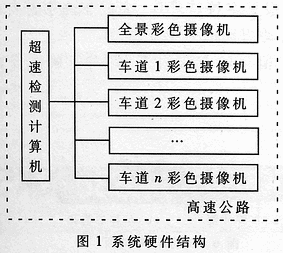
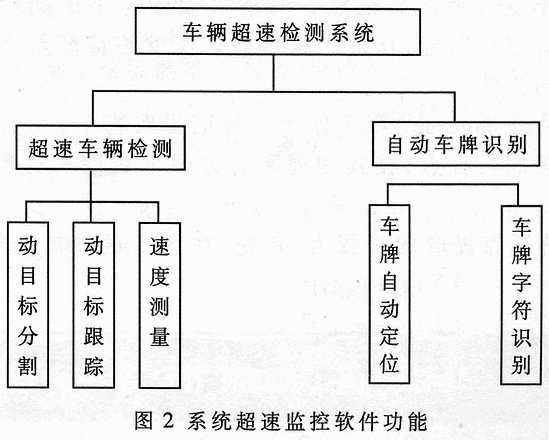
Let Ck = {ck (x, y)} represent the current image, Rk = {rk (x, y)} represent the reference image, where (x, y) is the pixel coordinate, ck (x, y) ≥0 rk (x, y) ≤255, then the extraction function Ek = (ck (x, y), rk (x, y)) is defined as follows: 
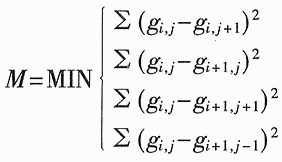
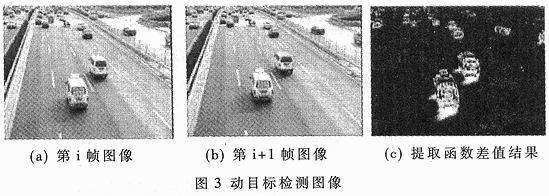
After finding the matching point, using the parallax of the two and the minimum distance replaced by the minimum resolution of the image in the field of view previously calibrated and the interval time of image acquisition, the target speed can be calculated, and the new position of the target can be predicted based on this value and judged Speeding. 
2.4 Automatic character recognition [8] 
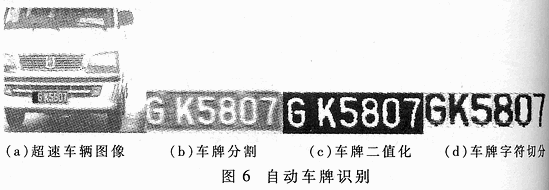
3 System characteristics 






'+ data.username +'